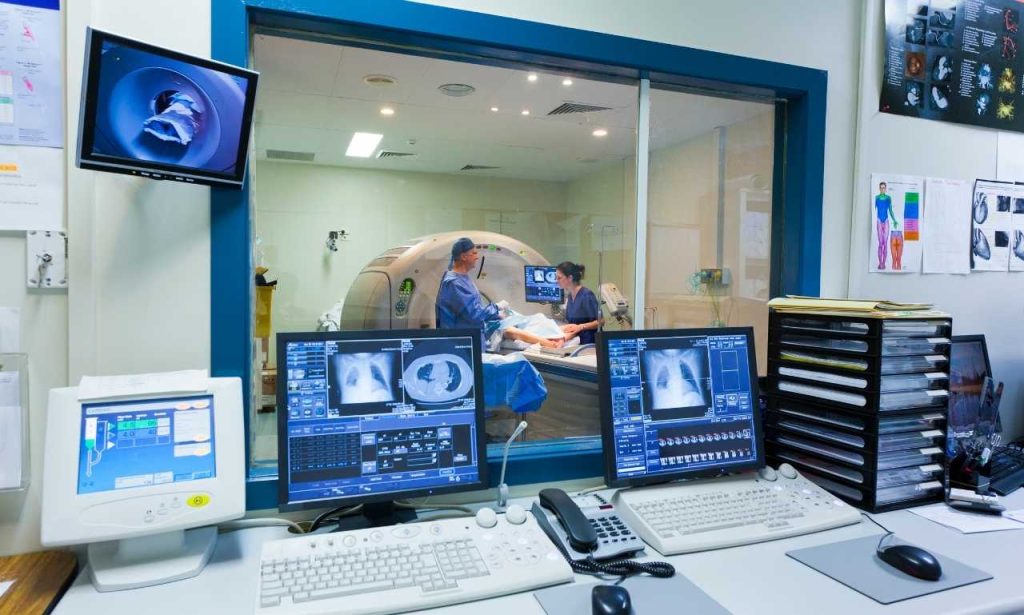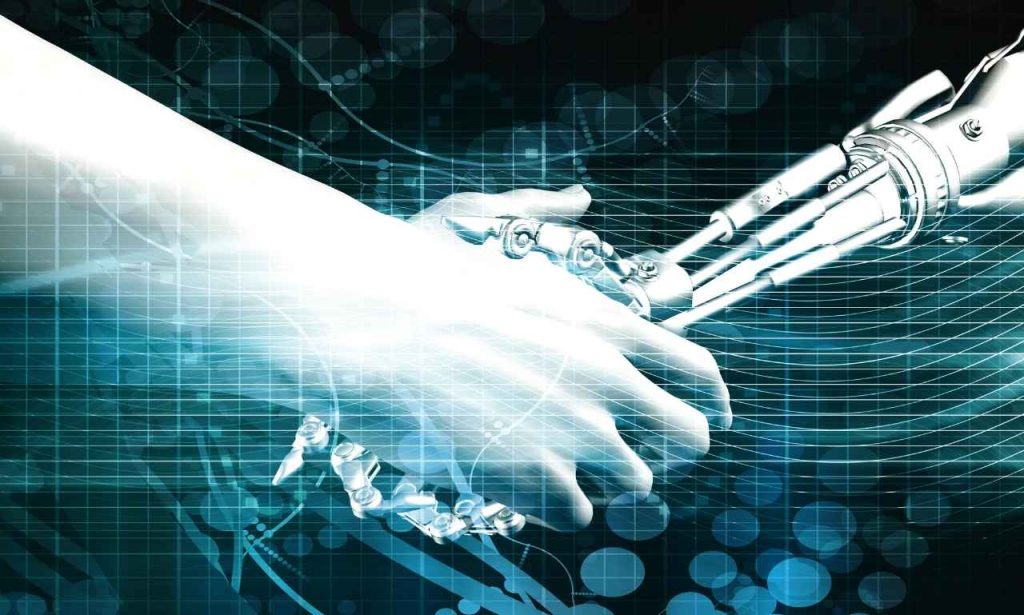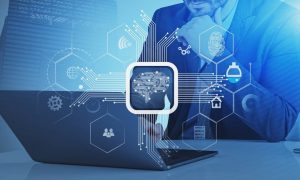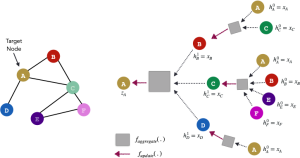Hospitals today face countless challenges. Doctors work long hours, nurses struggle with heavy patient loads, and administrators watch costs carefully. Enter machine learning—a technology changing healthcare in remarkable ways. From the ER to the cancer ward, these smart systems help medical teams work better. They spot problems earlier, suggest treatments that work, and even cut wait times and reduce wasted resources.
Real hospitals report amazing results. Community General saw sepsis deaths drop 22% after adding machine learning tools, and County Memorial reduced medication errors by a third. These aren’t just statistics—they represent actual lives saved and suffering avoided. The best part? We’re just getting started with this technology in healthcare.
This article explores how machine learning works in hospitals right now. We’ll look at real examples, not just theories. You’ll learn how these tools help doctors, not replace them. Most importantly, you’ll see why patients should welcome this technology as a path to better care.
What is Machine Learning?

Machine learning lets computers learn without being specifically programmed. The examples of systems study get better over time. Think about how you learned to recognize cats as a child. You saw many examples until you could quickly identify cats in any situation. Machine learning works similarly but can process millions of examples quickly.
In hospitals, these systems analyze patient data to find patterns. They study lab results, vital signs, medical images, and doctor notes. After examining thousands of cases, they recognize warning signs humans might miss. A subtle pattern in blood test results might signal infection hours before obvious symptoms appear.
Medical machine learning started with essential statistical models years ago. Today’s systems use complex algorithms that can handle messy, incomplete data. They work with images, text, and numerical information simultaneously. The latest tools adapt continuously as they process new information from patient cases.
Why is Machine Learning Important for Healthcare Organizations?
Healthcare organizations struggle with ever-growing challenges. Aging populations need more care, new treatments increase costs, and staff shortages strain existing teams. Machine learning helps address these problems without requiring complete system overhauls.
Tom Jenkins, CEO of Westside Medical Center, explains their experience: “We implemented machine learning for patient scheduling last year. No-show rates dropped 30%. We treat more patients without adding staff. The return on investment was clear within months.”
Real-World Impact on Patient Outcomes
Early disease detection makes tremendous differences in treatment success. Machine learning excels at spotting subtle warning signs in patient data. At Riverside Hospital, their system analyzes daily lab values to flag patients at risk for kidney failure. Doctors receive alerts up to 48 hours earlier than traditional methods provide. Early intervention prevents permanent kidney damage in many cases.
Cancer treatment benefits particularly from this technology. Algorithms now examine tissue samples with remarkable accuracy. They identify cancer subtypes beyond what pathologists can see under microscopes. Treatment plans based on these precise classifications show better outcomes. Patients experience fewer side effects when treatments target specific cancer characteristics.
Heart attacks still kill thousands daily. Machine learning helps identify at-risk patients before emergencies occur. Northeast Medical implemented a system analyzing patient records for heart attack risk factors. Their emergency readmissions dropped 17% in the first year. Patients now receive preventive care rather than emergency treatments.
Operational Efficiency and Resource Management
Machine learning technology enhances hospital management and delivers clinical treatment. The optimization process for staff assignments relies on predictions of upcoming patient demand through predictive scheduling. The system provides adequate staffing without requiring additional expenses for unnecessary personnel. Nurses show better satisfaction with their jobs when their workloads remain balanced during all shifts.
Equipment management implements forecasting capabilities analogous to those employed in other hospital areas. Hospitals collect data about equipment utilization to determine which maintenance tasks need to be performed before equipment failures become imminent. Hospitals minimize their emergency repair expenses by safeguarding their scheduled procedures from being canceled. Medical tests experience shorter patient waiting times because all diagnostic equipment functions correctly.
The management of infections has become the top priority in recent health emergencies. Machine learning systems enable hospitals to detect possible outbreak origins inside their facilities. The system examines both patient mobility patterns and staff-to-staff and staff-to-environment interactions. Early warnings about emerging patterns allow healthcare providers to intervene at a stage when an outbreak has not yet gained extensive spread. These hospital information systems have enabled multiple healthcare facilities to reduce hospital-acquired infections significantly.
Will Machine Learning Replace Doctors?

Many worry that technology might eventually replace medical professionals. The evidence suggests otherwise. Machine learning serves as a tool that enhances human capabilities rather than replacing them. Doctors using these systems make better decisions than either humans or computers alone.
Dr. Sarah Williams, an ER physician for 15 years, shares her perspective: “The machine learning tool we use highlights concerning patterns in vital signs. It handles the continuous monitoring I physically cannot do. But I still make treatment decisions based on the complete clinical picture. The technology makes me better at my job.”
The Collaborative Future of Healthcare
Healthcare works best when human judgment combines with technological capabilities. Doctors bring contextual understanding, empathy, and ethical reasoning to patient care. Machine learning contributes tireless data processing and pattern recognition across thousands of similar cases. Together, they deliver care beyond what either could provide independently.
This partnership appears across hospital departments today. Radiologists review images alongside AI detection systems. Oncologists consider treatment suggestions from machine learning platforms. Pharmacists verify medication recommendations that account for all potential interactions. In each case, the final decisions remain in human hands.
Ethical Considerations and Human Oversight
Implementing machine learning in healthcare demands careful attention to ethical concerns. If not carefully developed, algorithms can reflect biases present in training data. Socioeconomic factors might influence who benefits from these technologies. Hospital committees now include ethicists who review new systems before implementation.
Patient privacy requires robust protection when using data for machine learning. Hospitals anonymize information used for algorithm training. They maintain strict access controls and security measures. Many institutions allow patients to opt out of having their data used for system development while still benefiting from existing tools.
What is the Difference Between Machine Learning and Deep Learning in Healthcare?
Machine learning is the broader category encompassing various approaches to automated learning. Deep learning represents a specialized subset using artificial neural networks with multiple processing layers. These networks loosely mimic the structure of the human brain and excel with complex, unstructured data.
Traditional machine learning often requires human experts to select relevant features for analysis. Deep learning identifies important characteristics automatically through its layered structure. This capability proves particularly valuable with medical images and clinical text notes.
Applications in Medical Imaging
Medical imaging demonstrates the different approaches clearly. Standard machine learning might measure specific tumor characteristics selected by physicians. Deep learning examines entire images and discovers relevant features independently. It often identifies subtle patterns invisible to human observers.
Metro University Hospital adopted deep learning for stroke detection in brain scans. Their system identifies early signs of stroke within minutes of image acquisition. Treatment begins earlier, often preventing permanent brain damage. Neurologists report the system catches subtle signs they occasionally miss, especially during busy overnight shifts.
Natural Language Processing in Healthcare Records
Doctor notes contain valuable information in an unstructured text format. Deep learning approaches this challenge through natural language processing capabilities. The technology extracts meaningful insights from clinical narratives, patient complaints, and treatment notes, transforming previously untapped information into actionable data.
Dr. Robert Chen from City General describes their experience: “Our system analyzes discharge notes to identify patients likely to return within 30 days. It spots subtle language patterns indicating potential complications. Our follow-up team contacts these high-risk patients proactively. Readmissions have decreased substantially.”
What Are the Benefits of Machine Learning for Healthcare Providers and Patient Data?
Implementing machine learning systems provides healthcare providers with numerous advantages. Diagnostic accuracy improves through pattern recognition across similar cases. Treatment recommendations incorporate outcomes from thousands of comparable patients. Workflow efficiencies reduce administrative burden and documentation time.
Disease prediction allows intervention before serious symptoms develop. Algorithms identify subtle risk patterns across patient populations. Preventive measures replace expensive emergency treatments. This proactive approach to healthcare delivery benefits both patients and hospitals.
Personalized Treatment Planning
Treatment personalization represents a major advantage of machine learning in modern hospitals. Traditional approaches apply standard protocols based on broad disease categories. Machine learning analyzes individual patient characteristics to predict treatment responses. Genetic factors, comorbidities, and lifestyle elements inform these predictions.
Dr. Jessica Martinez, an oncologist at Memorial Cancer Center, explains: “We used to give similar chemotherapy to most breast cancer patients. Now, our system suggests personalized regimens based on specific tumor biology. Some patients avoid unnecessary treatments, while others receive more targeted therapies. The improvement in outcomes has been remarkable.”
Streamlined Administrative Processes

Administrative tasks consume significant resources in modern healthcare settings. Machine learning effectively automates many routine processes. Natural language processing extracts billing information from clinical documentation. Scheduling systems optimize appointment times based on procedure duration patterns. These improvements reduce costs while enhancing patient experience.
Insurance processing benefits substantially from machine learning capabilities. Systems predict claim approvals based on historical patterns. They highlight potential issues before submission. This proactive approach improves cash flow and reduces administrative overhead. Several hospitals report insurance payment times dropping by 40% after implementation.
Conclusion
Machine learning systems improve hospital healthcare services by delivering better diagnoses, individualized treatments, and operational performance enhancements. The technology functions optimally with medical personnel while standing separate from replacing clinical staff members. Successful implementation depends on purposeful teamwork between clinical staff and technical professionals.
Hospitals must implement machine learning systems strategically instead of pursuing each new technology. The application should target problems for which there is already enough data. The process should include medical staff involvement from development through deployment. Regular system output verification and bias monitoring should be maintained through strategic oversight.
The healthcare field expects positive developments from machine learning as its capabilities advance within healthcare facilities. Patients receive more personalized care, providers make better-informed decisions, and hospitals operate more efficiently. When deployed properly, these systems generate beneficial outcomes for patient care delivery.
Also Read: How to make a data analyst portfolio that truly computes
FAQs
Accuracy varies by condition, but many systems now match or exceed specialist physicians for specific diagnostic tasks, such as analyzing certain medical images.
Yes, when ordered by licensed physicians following appropriate clinical guidelines, these treatments receive standard insurance coverage.
Hospitals use data anonymization, encryption, access controls, and strict security protocols to protect patient information.
Yes, through earlier interventions, fewer errors, shorter hospital stays, and more efficient resource use.



